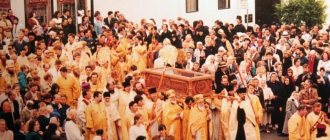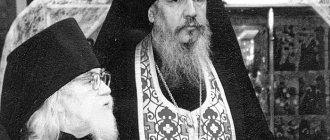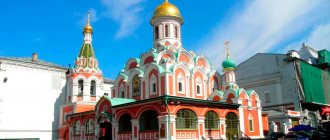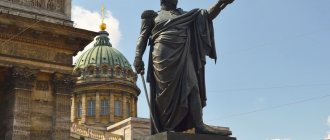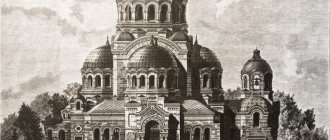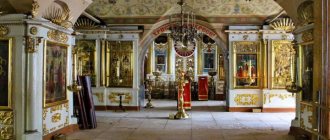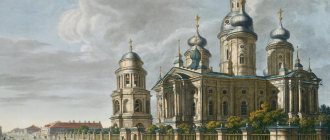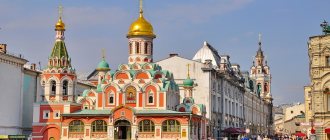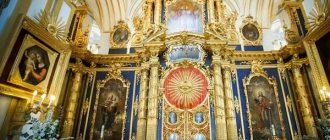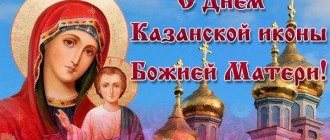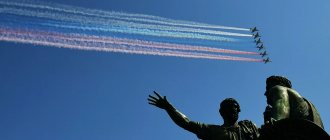Mir
Russia St. Petersburg Cathedral of the Kazan Icon of the Mother of God (St. Petersburg) Map is loading…
{"format":"leaflet","minzoom":false,"maxzoom":false,"limit":50,"offset":0,"link":"all","sort":[""], "order":[],"headers":"show","mainlabel":"","intro":"","outro":"","searchlabel":"\u2026 \u0441\u043b\u0435\ u0434\u0443\u044e\u0449\u0438\u0435 \u0440\u0435\u0437\u0443\u043b\u044c\u0442\u0430\u0442\u044b","default":"","import-annotation":false,"width ":"auto","height":"350px","centre":{"text":"","title":"""link":"""lat":59.93419899999999955753082758747041225433349609375,"lon": 30.324465000000000003410605131648480892181396484375,"icon":""},"title":"","label":"","icon":"","lines":[],"polygons":[],"circles":[ ],"rectangles":[],"copycoords":false,"static":false,"zoom":8,"defzoom":14,"layers":["OpenStreetMap"],"image layers":[] ,"overlays":[],"resizable":false,"fullscreen":true,"scrollwheelzoom":true,"cluster":false,"clustermaxzoom":9,"clusterzoomonclick":true,"clustermaxradius":80, "clusterspiderfy":true,"geojson":"","clicktarget":"","showtitle":true,"hidenamespace":false,"template":"","userparam":"","activeicon": "","pagelabel":false,"ajaxcoordproperty":"","ajaxquery":"","locations":[{"text":"\u003Cb\u003E\u003Ca href=\"/palomnik/%D0% 9A%D0%B0%D1%84%D0%B5%D0%B4%D1%80%D0%B0%D0%BB%D1%8C%D0%BD%D1%8B%D0%B9_%D1%81% D0%BE%D0%B1%D0%BE%D1%80_%D0%9A%D0%B0%D0%B7%D0%B0%D0%BD%D1%81%D0%BA%D0%BE%D0% B9_%D0%B8%D0%BA%D0%BE%D0%BD%D1%8B_%D0%91%D0%BE%D0%B6%D0%B8%D0%B5%D0%B9_%D0%9C% D0%B0%D1%82%D0%B5%D1%80%D0%B8_(%D0%A1%D0%B0%D0%BD%D0%BA%D1%82-%D0%9F%D0%B5% D1%82%D0%B5%D1%80%D0%B1%D1%83%D1%80%D0%B3)\» title=\»\u041a\u0430\u0444\u0435\u0434\u0440\u0430\u043b \u044c\u043d\u044b\u0439 \u0441\u043e\u0431\u043e\u0440 \u041a\u0430\u0437\u0430\u043d\u0441\u043a\u043e\u0439 \u0438\u043a \u043e\u043d\u044b \u0411\u043e \u0436\u0438\u0435\u0439 \u041c\u0430\u0442\u0435\u0440\u0438 (\u0421\u0430\u043d\u043a\u0442-\u041f\u0435\u0442\u0435\u0440 \u0431\u0443\u0440\u0433 )\u003E\u041a\u0430\u0444\u0435\u0434\u0440\u0430\u043b\u044c\u043d\u044b\u0439 \u0441\u043e\u0431\u043e\u0440 \u041a\u04 30\u0437\u0430\u043d\ u0441\u043a\u043e\u0439 \u0438\u043a\u043e\u043d\u044b \u0411\u043e\u0436\u0438\u0435\u0439 \u041c\u0430\u0442\u0435\u0440\u 0438 (\u0421\u0430\u043d\u043a \ u0442- \ u041f \ u0435 \ u04442 \ u0435 \ u04440 \ u0431 \ u0443 \ u0440 \ u0433) \ u003c/a \ u003e \ u003c/b \ u003chr/\ u003e \ u003CA HREFA HREAF = \ "/Palomnik/%D0 %A1%D0%B2%D0%BE%D0%B9%D1%81%D1%82%D0%B2%D0%BE:%D0%90%D0%BD%D0%BD%D0%BE%D1% 82%D0%B0%D1%86%D0%B8%D1%8F\" title=\"\u0421\u0432\u043e\u0439\u0441\u0442\u0432\u043e:\u0410\u043d\u043d\u043e\u0442 \u0430\u0446\u0438\u044f\»\u003E\u0410\u043d\u043d\u043e\u0442\u0430\u0446\u0438\u044f\u003C/a\u003E: »'\u041a\u0430\u0437\ u0430\u043d\ u0441\u043a\u0438\u0439 \u0441\u043e\u0431\u043e\u0440"' \u2014 \u043e\u0434\u0438\u043d \u0438\u0437 \u043a\u0440\u0443\u04 3f\u043d\u0435\u0439\u0448\ u0438\u0445 \u0445\u0440\u0430\u043c\u043e\u0432 \u041f\u0435\u0442\u0435\u0440\u0431\u0443\u0440\u0433\u0430, \u043f\u043e\ u0441\u0442\u0440\u043e\u0435 \u043d \u043d\u0430 \u041d\u0435\u0432\u0441\u043a\u043e\u043c \u043f\u0440\u043e\u0441\u043f\u0435\u043a\u0442\u0435 \u043 2 1801\u20141811\u0433\u043e\u0434\ u0430\u0445","title":"\u041a\u0430\u0444\u0435\u0434\u0440\u0430\u043b\u044c\u043d\u044b\u0439 \u0441\u043e\u0431\u043e\u0440 \u0 41a\u0430\u0437 \u0430\u043d\u0441\u043a\u043e\u0439 \u0438\u043a\u043e\u043d\u044b \u0411\u043e\u0436\u0438\u0435\u0439 \u041c\u0430\u0442 \u0435\u0440\u0438 (\u0421\ u0430\u043d\u043a\u0442-\u041f\u0435\u0442\u0435\u0440\u0431\u0443\u0440\u0433)»»link»:»»»lat»:59.9341989999999995575308275874704 1225433349609375,"lon":30.3244650000000000003410605131648480892181396484375,"icon ":""}],"imageLayers":[]}
59.934199; 30.324465
Russia, St. Petersburg, Kazanskaya square, 2
Saint Petersburg
Russia
Phones:
+7 (812) 314-46-63 (secretary); +7 (812) 314-58-56 (shift, from 8:00 to 21:00)
Email:
Kazan Cathedral
- one of the largest churches in St. Petersburg, built on Nevsky Prospekt in 1801-1811 by the architect A. N. Voronikhin to store the revered copy of the miraculous icon of the Mother of God of Kazan. Made in Empire style. After the Patriotic War of 1812, it acquired significance as a monument to Russian military glory. In 1813, commander M.I. Kutuzov was buried here and the keys to the captured cities and other military trophies were placed.
Today, the Kazan Cathedral is, in accordance with its status, the center of church life in St. Petersburg, attracting many pilgrims and tourists under its majestic arches. The cathedral is open daily, from half past eight in the morning (on Sundays - from seven) until the end of the evening service.
Content
- 1 History 1.1 Church of the Nativity of the Blessed Virgin Mary
- 1.2 Construction of the Kazan Cathedral
- 1.3 Kazan Cathedral and Russian military glory
- 1.4 Soviet period
- 3.1 Outside
- 6.1 St. Petersburg list of the miraculous icon of the Mother of God “Kazan”
Museum of Russian Natural Stone
The Kazan Cathedral is called the museum of Russian natural stone. The main decorative material was calcareous tuff, which was mined in the Gatchina region. The Pudost stone, as it is called, was similar to the Italian travertine stone used to build St. Peter's Cathedral. Tuff with a porous structure was easy to process; it was used for cladding the outer walls of the cathedral, creating capitals, friezes and platbands. In the interior decoration of the temple, Voronikhin used Karelian marble, local porphyry, and jasper. The interior of the cathedral was decorated with 56 pink granite columns with gilded capitals.
History[[edit]h2>
The St. Petersburg Kazan Cathedral was built as a container for one of the main shrines of the young northern capital - the miraculous copy of the Kazan Icon of the Mother of God - and in this capacity it had several predecessors.
Church of the Nativity of the Blessed Virgin Mary[[edit]h3>
Cathedral of the Nativity of the Blessed Virgin Mary (Kazan Cathedral).
1762 Accession of Catherine II The St. Petersburg Kazan Cathedral was built as a receptacle for one of the main shrines of the young northern capital - the miraculous copy of the Kazan Icon of the Mother of God - and in this capacity it had several
predecessors. At first, the icon, brought to St. Petersburg in 1710, was placed in a small “svetlichka” - a wooden chapel near the Nevka, on Posadskaya Street of Gorodovoy Island (the current Petrograd side). In 1727, the dilapidated chapel was closed, and the venerated image of the Most Holy
In 1733, Empress Anna Ioannovna, having special respect for the St. Petersburg shrine, ordered the office of the commissariat affairs to ask the Holy Synod for permission “to build on the prespekt road, passing the Green (Police) Bridge, which across the Moika, on the right side, a church, for the amounts assigned from the quartermaster's office." The Holy Synod, of course, blessed the construction.
By 1737, a new “ark” for the miraculous icon had grown approximately on the spot where the Kazan Cathedral now stands. The temple, consecrated in honor of the Nativity of the Blessed Virgin Mary (although even then it was called “Kazan”), belonged to the court department, but was not distinguished by its outstanding size or particularly luxurious decoration.
Construction of the Kazan Cathedral[[edit]h3>
The Roman Cathedral of St. Peter and the square in front of it in a painting of the 18th century
In 1799, Paul I, having ascended the throne, announced a competition for the design of a new Kazan Cathedral. Among the competition participants were famous architects: P. Gonzago, C. Cameron, D. Trombaro, J. Thomas de Thomon. They all had a difficult task to solve: the emperor demanded that the new cathedral be similar to St. Peter's in Rome. This cathedral, seen by Paul I during his trip to Europe in the 1780s, captured his imagination. He was especially struck by Bernini's colonnade encircling the square in front of the cathedral. Now he wanted a similar colonnade to decorate the facade of the Kazan Cathedral. None of the eminent architects could satisfy the emperor's requirements.
Only the then little-known architect A. N. Voronikhin, who came from the serfs of Count Stroganov, succeeded. He proposed a solution thanks to which the temple organically fit into the ensemble of Nevsky Prospekt. According to Voronikhin's project, the columns were supposed to encircle the cathedral not only from the northern side (facing Nevsky) but also from the southern side, and three squares were supposed to be created around the temple - from the north, south and west. But it was not possible to implement this expensive idea, and a colonnade similar to the Roman one adorned only the northern facade of the Kazan Cathedral.
A gilded tablet was already ready, announcing that “the most pious, autocratic Great Sovereign, Emperor Paul the First of All Russia, in his fifth year of reign, and the third summer of his Grand Mastery, laid the foundation of the holy temple.” But the crown bearer did not live to see the ceremonial laying of the first stone in the foundation of the temple, being killed by the conspirators in his own bedroom.
His heir, Emperor Alexander I, had to lay the foundation for the cathedral, which he did - and, as if atoning for his guilt before his late father (and only the lazy did not talk about this guilt), he was in such a hurry to lay the foundation that he did not even wait for the coronation. The foundation stone of the Kazan Cathedral took place on August 27, 1801, the coronation of Alexander the Blessed took place on September 15. Voronikhin's fears that the new emperor would stop the construction of the Kazan Cathedral were not confirmed.
But, despite all efforts, it was not possible to complete construction within the time period specified by the late emperor (three years). Russia has entered an era of foreign policy conflicts; There began, as they would say now, interruptions in funding. And Voronikhin was unable to meet the budget, which is why difficulties constantly arose. Only in the autumn of 1811 was the cathedral ready for consecration.
Kazan Cathedral at the beginning of the 19th century
The solemn consecration of the Kazan Cathedral by Metropolitan Ambrose took place on September 15 (27), 1811. The same year the old church was dismantled. But by this time only basic construction and finishing work had been completed. The decoration of the temple continued after its consecration, throughout 1811-1812. The best painters of their time worked on the interior decoration of the cathedral - V. L. Borovikovsky, V. K. Shebuev, K. P. Bryullov and others, and this did not happen without conflicts between the Council of the Academy of Arts and the Holy Synod. The Synod insisted that the icons for the cathedral should be painted on a gold background, while the Council of the Academy declared that “the art of painting is completely lost in this case.” As a result, the point of view of the academicians won, and the cathedral acquired brilliant canvases on a religious theme from a picturesque point of view, but in fact it was left without icons, since the works of academic masters brought up on European painting cannot be considered as such.
Kazan Cathedral and Russian military glory[[edit]h3>
Kazan Cathedral in the middle of the 19th century.
Drawing by Luigi Premazzi Finishing work in the Kazan Cathedral coincided with the beginning of the Patriotic War. The war disrupted the plans of the craftsmen, who sought to quickly finish the decoration of the cathedral, but later, by the providence of God, it served to increase its glory. August 8, 1812 M.I. Kutuzov took command of the Russian troops and, leaving for the active army, prayed before the Kazan Icon of the Blessed Virgin Mary, which was in the Kazan Cathedral.
Attributing the victories of Russian weapons, which came after humiliating retreats and defeats, to the intercession of the Mother of God, Kutuzov also had special feelings for the Kazan Cathedral. Trophies that fell into the hands of the Russians were immediately sent by them to St. Petersburg - in order to be presented before the miraculous image of the Queen of Heaven. Banners and standards - French, Italian, Polish, German - military badges and keys to captured cities arrived at the Kazan Cathedral, which thus turned into a kind of memorial of Russian military glory, inseparable in the understanding of contemporaries, who still had the habit of thinking soberly and humbly, from the glory and power of God. On the medal “In Memory of the Patriotic War of 1812,” established by decree of Alexander I in 1813, the words from Psalm 113 were engraved: “Not to us, not to us, but to Your name” (in the psalm - “Not to us, Lord, not to us, but give glory to Thy name, for the sake of Thy mercy, for the sake of Thy truth"), And this “not to us...” was expressed in the symbolic act of bringing trophies - including the baton of the “Iron Marshal” Davout, captured by the Russians on November 5, 1812 - to the house Holy Mother of God.
Mid-19th century lithograph
Trophies arrived at the Kazan Cathedral not only from the “western” fronts, but also from Transcaucasia, where Russia waged a bloody war with Persia, “seemingly” invisible against the backdrop of the fight against the Napoleonic army.
By the beginning of the 20th century, according to inventories, the cathedral contained 107 banners and standards and 97 keys to the captured cities. Then they were transferred to Moscow, where it was planned to create a museum of the Patriotic War of 1812. But the museum was never organized. At first, this idea was eclipsed by the celebrations dedicated to the 300th anniversary of the Romanov dynasty, and then the First World War began.
On February 21 (March 6), 1913, a stampede occurred in the cathedral during the celebration of the 300th anniversary of the Romanov dynasty, which, according to the official version, claimed the lives of 34 people.
On May 24 (June 6), 1917, in the cathedral, through “free voting of clergy and laity,” elections of the ruling bishop took place (the only time in the entire history of the diocese). Bishop Veniamin (Kazan) of Gdov received the majority of electoral votes.
Soviet period[[edit]h3>
Signing the act of transferring the relics of St.
Seraphim of Sarov of the Russian Orthodox Church. I99I year. On the left is the director of the museum S.A. Kuchineky, on the right is His Holiness Patriarch Alexy II. In 1918, when the Bolshevik government began unprecedented persecution of the Church, Fr. The philosopher Ornatsky built a temple in the basement of the Kazan Cathedral in the name of the holy martyr Patriarch Hermogenes. The image of this High Hierarch, who until his last breath called on the people to fight against the interventionists, was especially close to believers at that time. It was here, in this “cave” church, that services were held during the terrible military-communist winter of 1918-1919, since it was impossible to serve in the frozen cathedral.
But worse times have come. Execution of Fr. The philosopher, the barbaric seizure of valuables from the Kazan Cathedral (during which its unique silver iconostasis was lost), the transfer of the temple to the renovationists and, finally, its closure and “re-equipment” for the needs of anti-religious propaganda. The cross was removed from the cathedral, replacing it with an “ideologically neutral” spire.
In 1932, the Kazan Cathedral housed the Museum of the History of Religion and Atheism, the first director of which was the ethnographer and researcher of the life and beliefs of the indigenous peoples of Siberia V. G. Bogoraz (Tan).
The war inflicted severe wounds on the cathedral: its roof had more than one and a half thousand holes from shell fragments, and the walls and columns were dotted with their traces. Wall paintings were destroyed due to dampness, and ceilings collapsed in some rooms. Restoration work carried out from 1951 to 1956 allowed the interiors of the cathedral to be put in order, and its facades were restored already in the 1960s.
In 1950-1956, the interior was restored, and in 1963-1968, the facades were restored.
The museum, located under the roof of the Kazan Cathedral, regularly fulfilled its ideological function until the end of the 1980s, when, against the backdrop of certain changes in the state’s attitude towards its believing citizens, atheistic propaganda began to falter. In the summer of 1989, in the building of the museum (that is, the cathedral), the return to the Church of the relics of the blessed Prince Alexander Nevsky took place, and after that the relics of the Venerables Zosima, Savvaty and Herman Solovetsky.
In 1990, the relics of St. Seraphim of Sarov were found in the museum repository and transferred to the Church in January 1991. A few more months later, in the attic of the Kazan Cathedral, the relics of St. Joasaph of Belgorod, which were considered missing, were discovered.
In 1994, the cross shone over the cathedral again.
History of construction
A memorial plaque on the wall of the cathedral announces the start of construction of the temple at the behest of Paul I in 1801 instead of the crumbling Church of the Nativity of the Virgin. Famous European architects took part in the competition for designs for the future temple, but the design of the talented genius architect Voronikhin, who did not participate in the competition, and was recommended by Count Stroganov, was taken as the basis. The laying of the first stone took place after the tragic death of Paul the 1st on September 8, 1801 in a solemn atmosphere.
Current state[[edit]h2>
The process of returning the Kazan Cathedral to liturgical life was slow. Although already at the end of the 1980s the museum handed over to the Church the relics of revered saints, stored in storerooms, the cathedral building itself continued to be used for museum needs (although the name of the museum no longer contained the word “atheism”; it was only about the “history of religion”) , November 4 (new style) 1990, on the day of the Kazan Icon
Mother of God, priest of the Prince Vladimir Cathedral Grigory Krasnotsvetov served the first Divine Liturgy in the Kazan Cathedral after many years. For worship, believers were given the north-eastern part of the temple, where previously there was a chapel in the name of St. Anthony and Theodosius of Kiev-Pechersk, and services, by agreement with the museum, were to be performed only on Sundays and holidays. The transfer of the cathedral to the Church dragged on for several years.
In 1998, the Kazan Cathedral was solemnly consecrated by Metropolitan of St. Petersburg and Ladoga Vladimir (Kotlyarov), and two years later the cathedral received cathedral status.
Train accident
There are many unusual places in the Kazan Cathedral. One of them is hidden in the far corner of the cathedral. If you walk the entire temple from north to south, you will see... Jerusalem. Honestly! There is a recess in the southern wall, and in it is drawn the starry sky and the sleeping Holy City - Jerusalem. In front of this niche stands a wooden crucifix. The niche was ordered to be made in gratitude to God for saving the imperial family. Alexander III with his wife and children, including the heir to the throne, the future Emperor Nicholas II, almost died when returning home from Crimea on an ordinary train. The locomotive suddenly went off the rails. This happened in 1888, October 17 at 14:14.
The crash of the imperial train on October 17, 1888, art. Borki, Kharkov province , photo by A. M. Ivanitsky
The whole family, except for the emperor’s daughter, Princess Olga, was having lunch together in the dining room at that moment. Suddenly a strong shock knocked everyone off their feet, and a terrible roar was heard - 10 cars went off the rails! The floor collapsed and everyone in the carriage fell onto the embankment. And Emperor Alexander... held the collapsing heavy ceiling on his shoulders until all members of his family and retinue got out from under the rubble! He was a man of incredible strength, perhaps even stronger than Ilya Muromets! He could easily twist a steel fork into a bow with one hand. So, thanks to his strength, neither his wife nor children were harmed. And Grand Duchess Olga, who was in her compartment at the time of the crash, was simply thrown onto an embankment.
Portrait of Alexander III, artist Nikolai Schilder
Although such a miraculous salvation, of course, cannot be explained by the king’s physical strength alone. More than twenty passengers from other carriages were killed in this terrible accident. And members of the imperial family received only scratches and minor bruises. In memory of this miracle, the “Jerusalem niche” was made in the Kazan Cathedral, where the emperor hurried immediately after returning to St. Petersburg.
Architecture and interior decoration of the cathedral[[edit]h2>
The closest stylistic predecessor of the Kazan Cathedral was St. Peter's Cathedral in Rome. This relationship is primarily reminiscent of the colonnade, “unfolded” towards Nevsky Prospekt.
The rest of the architectural design of the temple is a synthesis of basilica (characteristic of Roman temple architecture) and cross-domed (traditional for the Orthodox temple-building tradition) forms. The cathedral stretches along Nevsky Prospekt from west to east and has the shape of a Latin (elongated) cross in plan. This, however, cannot be seen by an outside observer, contemplating only the front façade of the cathedral, since its main volume is “fenced off” from Nevsky Prospect by a colonnade.
Over the two hundred years of existence of the Kazan Cathedral, its appearance has undergone almost no changes. In 1903, zealous parishioners wanted to erect a massive bell tower next to the cathedral, but this pious project was not realized due to the opposition of the Academy of Arts. For the cathedral's centenary, celebrated in 1911, it was restored, but not everything planned was done. Thus, due to lack of funds, it was not possible to cast bronze statues of the Archangels Gabriel and Michael. Once upon a time, for the consecration of the cathedral, the sculptor Martos made them in plaster and tinted them to look like bronze. Subsequently, it was planned to replace the “dummies” with real bronze statues. As a result, the plaster Archangels stood at the passages of the colonnades for thirty years, until they completely collapsed.
Outside[[edit]h3>
Bas-reliefs
The sculptural decoration of the Kazan Cathedral should have been, according to the architect’s plan, much richer. But financial calculations intervened, the war began, and the decorative design of the temple remained largely “unfulfilled.” Nevertheless, what exists is of great interest. The outside of the cathedral is decorated with 14 bas-reliefs depicting scenes from the Old and New Testaments, made of Pudost stone. At the center of all Old Testament compositions is the prophet Moses. The photo shows the bas-relief “Giving the Tablets to Moses” located on the attic of the western passage.
Doors
The front bronze doors, located in the central part of the northern facade of the Kazan Cathedral, are a copy of the famous doors of the Florentine Baptistery, created in the 15th century by Lorenzo Ghiberti. True, the master Vasily Ekimov, who cast the doors, mixed up the sequence of plots and arranged them in a slightly different order than Ghiberti’s. The marble frame of the northern gate was made according to Voronikhin's design.
Dome
The dome of St. Petersburg's Kazan Cathedral is more reminiscent of the dome of the Parisian Church of Sainte-Geneviève or the Les Invalides than the massive dome of Rome's St. Peter's Cathedral. Despite its size (more than five meters in diameter), it seems very elegant. It is curious that during its construction, Voronikhin was the first in the world to use a metal structure, which significantly increased the strength of the entire structure.
Colonnade
The colonnade on the side of Nevsky Prospekt consists of 94 columns, 20 columns have a southern portico, 12 - a western one. All columns are of the Corinthian order, which is characterized by capitals lavishly decorated with stylized leaves. The facing of the columns is made of Pudost stone and covered with flutes (vertical grooves). Thanks to them, the columns appear to be light and slender, although in fact each of them weighs about 28 tons and is 14 meters high.
Inside[[edit]h3>
THE INTERIOR SPACE of the cathedral is organized quite traditionally. By means of columns of the Corinthian order, it is divided into three naves, the central one being four times wider than the side naves and covered with a semi-cylindrical vault. The side naves have coffered ceilings. Voronikhin selected the material for the columns during his honeymoon to the Karelian Isthmus, which he went on after his marriage to draftsman Mary Lond. His attention was attracted by granite deposits near Vyborg. This stone best suited the architect’s plan, and in 1803 intensive work began at the Vyborg quarries.
Other elements of the interior decoration also represent a marvelous “exhibition” of domestic mineral resources: the floor is paved with pink and gray Karelian marble with inserts of black shungite slates, and in the altar and on the pulpit there is crimson Shoksha quartzite, highly valued all over the world. Painting, performed by the best masters of that time, plays an important role in the design of the cathedral. Most of all, the Kazan Cathedral was famous for its silver iconostasis - now, alas, irretrievably lost.
In December 1812, M.I. Kutuzov sent several silver bars to Metropolitan Ambrose (Podobedov) of St. Petersburg, accompanying the parcel with a letter with the following content: “Bless this gift brought by soldiers to the Giver of victory. The brave Don Cossacks return His stolen treasure from the temples to God. I have been entrusted with the responsibility of delivering to your
St. Basil the Great" (1811-1812). An image painted by V. K. Shebuey for the southeastern pylon of the Kazan Cathedral
Your Eminence, this silver, which was once an adornment of the Holy Faces, then became the prey of wicked predators and, finally, plucked from their claws by the brave Dons. The leader of the Don Cossack Army, Count M.I. Platonov and together with him all his warriors and I wish that these ingots, weighing forty pounds of silver, would be turned into images of the four Evangelists and serve as decoration for the Church of the Kazan Mother of God in St. Petersburg ... " Both the bishop and the sovereign liked the idea of casting the evangelists in silver, but then the matter stalled. Models of the statues were made by Martos, but they seemed “too naked” to the Synod, and the issue of trophy silver was shelved.
Only in 1834 was a worthy use found for it: the time had come to replace the temporary iconostasis by Voronikhin, since it was too small for the interiors of the Kazan Cathedral, and the silver was used for a new iconostasis designed by K. A. Ton. “Cossack silver” was not enough, and the same amount had to be added to it. As a result, about a hundred pounds of precious metal were spent on the iconostasis.
In 1922, in the wake of a campaign to confiscate church valuables, the Tonovo silver iconostasis was dismantled and sent for melting down.
Exterior of the temple
The Kazan Cathedral resembles the residence of the Pope, from which it differs in majesty, splendor, extraordinary beauty and originality.
The building was built in the shape of a four-pointed Latin cross , in the middle of the cross there is a dome, along the drum of which there are 16 round windows.
The dome is supported by 4 monolithic pylons. The cathedral is hidden behind a colonnade consisting of 96 columns arranged in a semicircle, above which a dome rises at a height of 72 m. Each column, 14 m high, weighs 28 tons.
At the base of the building there is a high plinth made of large monoliths of gray granite. On the facade there are six-column porticoes with a bas-relief “The All-Seeing Eye”, decorated with triangular pediments. The length of the Kazan Cathedral is 72.5, width - 56.7 meters. In the western part of the colonnade there is a belfry; the bell tower was not built in the cathedral. There are 4 chapels in the temple. In 1900, a square was laid out in front of the Kazan Cathedral, adding the finishing touch to its appearance.
The outside of the temple is lined with Pudost stone, and there are statues of angels on the main façade. The northern facade is decorated with 4 bronze sculptures: Prince Vladimir, John the Baptist, Vladimir the First-Called and Alexander Nevsky, whose shield rests on a sword with a lion - the symbol of Sweden. Here is a bas-relief depicting scenes from the life of the Mother of God.
On the front Kazan Square there are two monuments to Russian commanders: Field Marshal Kutuzov and Mikhail Bogdanovich Barclay de Tolly, Minister of War of the Russian Empire. The commanders were cast in full height with cloaks on their shoulders. Kutuzov gives the signal to the troops to attack, Barclay de Tolly stands waiting.
Shrines[[edit]h2>
St. Petersburg list of the miraculous icon of the Mother of God “Kazan”[[edit]h3>
The Kazan Icon of the Mother of God is one of the most revered in our Fatherland. And although its prototype, once found in Kazan, has disappeared, many copies glorified by miracles remain. One of these resides in the Kazan Cathedral in St. Petersburg.
The Kazan Icon of the Mother of God, for which, in fact, the magnificent Kazan Cathedral was built, has been one of the most revered shrines of St. Petersburg from the very moment of its foundation. However, information about it available in pre-revolutionary descriptions of the Kazan Cathedral is very contradictory. Some publications directly state that this is the same icon that was revealed in Kazan in 1579, others say absolutely nothing about the origin of the icon, and still others call the St. Petersburg miraculous image of the Blessed Virgin Mary one of the copies from the prototype found in Kazan .
The last point of view seems to modern researchers the most reliable. It is assumed that the St. Petersburg list was created for Tsarina Praskovya Fedorovna, the wife of Tsar Ivan Alekseevich. In 1710, the widowed queen moved, at the urgent invitation of Peter I (with whom she had very good relations), to live in St. Petersburg and brought with her a copy of the Kazan Icon.
It is not known when this list showed its miraculous properties, but, apparently, soon after the death of Praskovya Fedorovna (and she was buried, by the way, on the feast of the Kazan Icon, October 22, 1723) it already enjoyed widespread veneration, which subsequently only strengthened.
In the Kazan Cathedral, the miraculous image of the Mother of God, dressed in a magnificent robe, remained until its closure, after which it was transferred to the Assumption Cathedral on Sennaya Square, which then belonged to the Renovationists, and then to the church at the Smolensk cemetery, famous for the fact that she helped build it. According to legend, Blessed Xenia of St. Petersburg. In 1940, this temple was closed, and the icon was moved to the Prince Vladimir Cathedral, which remained active throughout the Soviet era (except for a short period in 1926-1927). Here the image of the Queen of Heaven remained until 2001, when it again took its historical place in the Kazan Cathedral.
Temple-monument[[edit]h3>
Kazan Cathedral is a temple of Russian military glory.
August 8, 1812 M.I. Kutuzov took command of the Russian troops and, leaving for the active army, prayed before the Kazan Icon of the Blessed Virgin Mary, which was in the Kazan Cathedral.
Attributing the victories of Russian weapons, which came after humiliating retreats and defeats, to the intercession of the Mother of God, Kutuzov also had special feelings for the Kazan Cathedral. Trophies that fell into the hands of the Russians were immediately sent by them to St. Petersburg - in order to be presented before the miraculous image of the Queen of Heaven. Banners and standards - French, Italian, Polish, German - military badges and keys to captured cities arrived at the Kazan Cathedral, which thus turned into a kind of memorial of Russian military glory, inseparable in the understanding of contemporaries, who still had the habit of thinking soberly and humbly, from the glory and power of God. On the medal “In Memory of the Patriotic War of 1812,” established by decree of Alexander I in 1813, the words from Psalm 113 were engraved: “Not to us, not to us, but to Your name” (in the psalm - “Not to us, Lord, not to us, but give glory to Thy name, for the sake of Thy mercy, for the sake of Thy truth"), And this “not to us...” was expressed in the symbolic act of bringing trophies - including the baton of the “Iron Marshal” Davout, captured by the Russians on November 5, 1812 - to the house Holy Mother of God.
Trophies arrived at the Kazan Cathedral not only from the “western” fronts, but also from Transcaucasia, where Russia waged a bloody war with Persia, “seemingly” invisible against the backdrop of the fight against the Napoleonic army. On the night of January 1, 1813, a Russian detachment under the command of General P. S. Kotlyarevsky captured the Lankaran fortress. During fierce battles with the Persian garrison, our detachment lost more than half of its soldiers killed and wounded. Kotlyarevsky himself survived his wounds only by a miracle (he was found buried under the bodies of the dead, with a crushed leg and a leaking eye). Four Persian banners captured at Lenkoran joined the military memorial in the Kazan Cathedral.
By the beginning of the 20th century, according to inventories, the cathedral contained 107 banners and standards and 97 keys to the captured cities. Then they were transferred to Moscow, where it was planned to create a museum of the Patriotic War of 1812. But the museum was never organized. At first, this idea was eclipsed by the celebrations dedicated to the 300th anniversary of the Romanov dynasty, and then the First World War began. And now most of the trophies are in the State Historical Museum. An even sadder fate befell the silver – also in some way “trophy” – iconostasis of the Kazan Cathedral.
- Icon of the Blessed Virgin Mary “Czestochowa”
Tips for visitors
Today anyone can visit the architectural and cultural landmark. The excursion for tourists will be provided for a donation. Believers have access to morning and evening liturgies, as well as all-night vigils.
Special rules apply on the temple grounds:
- It is prohibited to film or photograph objects;
- you cannot touch the exhibits with your hands;
- It is better for women to cover their heads with a scarf, and for men to remove their hats.
It is strictly forbidden to ride on roller skates or scooters. You cannot bring bulky backpacks into the territory or bring animals with you.
Schedule of services[[edit]h2>
Divine services in the cathedral are held daily. The cathedral opens on weekdays at 7:00, on Sundays and holidays at 6:30. Closes after the end of the evening service.
During weekdays:
early Divine Liturgy - 7:30, confession begins at 7:30.
Late Divine Liturgy - 10:00, confession begins at 9:30.
Evening service - 18:00.
On Sundays and holidays:
Early Divine Liturgy - 7:00, confession begins at 7:00.
Late Divine Liturgy - 10:00, confession begins at 9:30.
Evening service - 18:00.
During the day, the Sacraments of baptism and weddings are performed in the cathedral, as well as prayer services and memorial services. There is always a priest on duty in the cathedral.
The schedule of services is regularly updated on the temple website.
Gates of the Kazan Cathedral
The monumental bronze doors framed with marble platbands are copied from the doors of the baptismal house in Florence. The master worked on them for 21 years and installed them in the temple in 1811, decorating them with an embossed composition on Old Testament themes.
- The creation of Adam and Eve. The Fall and Expulsion from Paradise.
- The sacrifice of Abel and his murder by Cain.
- The killing of an Egyptian by Moses and the exit of the Jews from Egypt.
- Abraham's sacrifice of the son of Jacob to God.
- Isaac's blessing on Jacob.
- The sons of Jacob in Egypt buying grain from Joseph.
- Jews in the desert and Moses on Mount Sinai.
- Destruction of Jericho.
- The defeat of the proud Nicanor, who threatened the destruction of Jerusalem.
- Meeting of Solomon with the Queen of Sheba.
